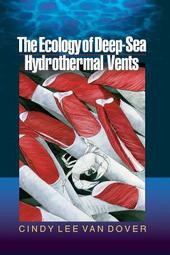
|
The Ecology of Deep-Sea Hydrothermal Vents
Paperback / softback
Main Details
| Title |
The Ecology of Deep-Sea Hydrothermal Vents
|
| Authors and Contributors |
By (author) Cindy Lee Van Dover
|
| Physical Properties |
| Format:Paperback / softback | | Pages:448 | | Dimensions(mm): Height 235,Width 152 |
|
| Category/Genre | Ecological science
Zoology - Invertebrates
Zoology - Vertebrates |
|---|
| ISBN/Barcode |
9780691049298
|
| Classifications | Dewey:577.77 |
|---|
| Audience | | Professional & Vocational | | Tertiary Education (US: College) | |
|---|
| Illustrations |
4 pages of color plates, 28 halftones, 158 line illus., 30 tables
|
|
Publishing Details |
| Publisher |
Princeton University Press
|
| Imprint |
Princeton University Press
|
| Publication Date |
26 March 2000 |
| Publication Country |
United States
|
Description
Teeming with weird and wonderful life--giant clams and mussels, tubeworms, "eyeless" shrimp, and bacteria that survive on sulfur--deep-sea hot-water springs are found along rifts where sea-floor spreading occurs. The theory of plate tectonics predicted the existence of these hydrothermal vents, but they were discovered only in 1977. Since then the sites have attracted teams of scientists seeking to understand how life can thrive in what would seem to be intolerable or extreme conditions of temperature and fluid chemistry. Some suspect that these vents even hold the key to understanding the very origins of life. Here a leading expert provides the first authoritative and comprehensive account of this research in a book intended for students, professionals, and general readers. Cindy Lee Van Dover, an ecologist, brings nearly two decades of experience and a lively writing style to the text, which is further enhanced by two hundred illustrations, including photographs of vent communities taken in situ. The book begins by explaining what is known about hydrothermal systems in terms of their deep-sea environment and their geological and chemical makeup.The coverage of microbial ecology includes a chapter on symbiosis. Symbiotic relationships are further developed in a section on physiological ecology, which includes discussions of adaptations to sulfide, thermal tolerances, and sensory adaptations. Separate chapters are devoted to trophic relationships and reproductive ecology. A chapter on community dynamics reveals what has been learned about the ways in which vent communities become established and why they persist, while a chapter on evolution and biogeography examines patterns of species diversity and evolutionary relationships within chemosynthetic ecosystems. Cognate communities such as seeps and whale skeletons come under scrutiny for their ability to support microbial and invertebrate communities that are ecologically and evolutionarily related to hydrothermal faunas. The book concludes by exploring the possibility that life originated at hydrothermal vents, a hypothesis that has had tremendous impact on our ideas about the potential for life on other planets or planetary bodies in our solar system.
Author Biography
Cindy Lee Van Dover, an Assistant Professor in the Biology Department at the College of William & Mary, was technician and pilot of the deep-diving submersible Alvin from 1989 to 1991. She has made more than 100 dives to depths of greater than 2000 m, and her work with Alvin has taken her to nearly all of the known vent fields in the Atlantic and Pacific. A personal account of her experiences as a pilot and scientist can be found in her popular book, Deep-Ocean Journeys.
ReviewsOne of Choice's Outstanding Academic Titles for 2000 "[Van Dover] writes well and is not above conducting heroic experiments in what I assume is her own kitchen."--Dennis Drabelle, Washington Post Book World "[An] impressive, eminently readable book..."--Ellis L. Yochelson, American Scientist "Foremost in understanding the ecology of hydrothermal vents has been Cindy Van Dover. "--Paul A. Tyler, Trends in Ecology and Evolution "The strength of Van Dover's book is that it is academically definitive... Coverage is comprehensive, and detailed geophysical, chemical and biological issues are taken in their stride with the same sureness of touch."--Richard Shelton, Times Literary Supplement "A remarkably thorough and balanced, dynamic account of evolving and expanding knowledge of these ocean systems ... This unique, most up-to-date book on a vast multidisciplinary subject, written enthusiastically and authoritatively, will be an invaluable resource..."--Choice "The book is remarkably thorough and comprehensive and keeps the reader captivated right up to the end... [A] unique source of information on knowledge of an ecosystem that few of us will ever get a chance to see first-hand."--D. Chandramohan, Current Science "I heartily recommend it to anyone with an interest in learning about what is undoubtedly one of the most important discoveries in earth and life sciences of the past century."--John Woodside, The Leading Edge
|